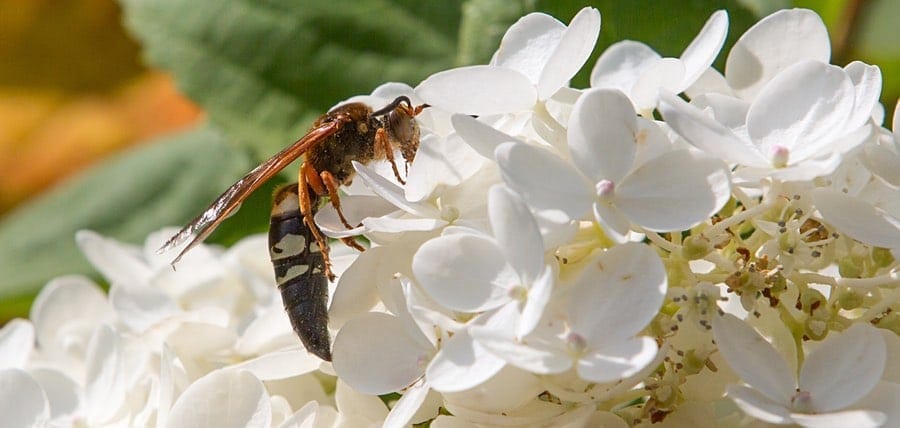Cicada Killer Wasp Facts
Cicada killer wasps are a large breed and are black and pale yellow. Only females of the species have stingers and those females are not territorial. Humans can pass freely as cicada killer females only sting when handled roughly, stepped on, or when they feel threatened. Male cicada killer wasps are territorial but have more bark than bite. These wasps can seem terrifying with their intense buzzing and may even challenge humans or animals in its territory, but these males do NOT have stingers. They are harmless but, as human beings, we are prone to spaz out at the first sign of buzzing.
Cicada Killer Wasp Sting
Just because the females won’t sting you intentionally, doesn’t mean an accidental sting doesn’t hurt. Cicada Killers are called such because they target the large, slow, loud cicadas as perfect food for their future babies. Once they’ve targeted their prey, cicada killers will sting the cicada and release a paralyzing agent so that the cicada can’t escape though it is still alive. The Cicada Killer then will carry it back to its burrow and drag it deep under the ground. The wasp lays one egg under one of the cicada’s hind legs and leaves it. When the egg hatches, the wasp larva will slowly eat the cicada, making sure not to kill it. Once the new wasp is grown, it flies away, leaving the cicada to die. A cool fact is that mother wasps can determine the sex of the egg they are laying to ensure the continuation of the species.
Pets can be sensitive to the paralyzing venom in the wasp stinger, so if you suspect your animal has met the back end of a cicada killer take it to a vet.
Cicada Killer Nests
Cicada killer nests are vast and complex. Several tunnels are dug out by the same mother to lay multiple eggs, and in the process several pounds of dirt can be displaced. This is normally harmless in the wilderness, but if (and when) they decide that the perfect burrow is under your front steps, it can cause a big issue with unstable foundation and more. The nests can be grouped together. Cicada killer nest can resemble hornets nests, which is concerning for many families. But don’t forget that these wasps are not territorial and will not sting unless provoked.
So, what are these solo wasps looking for in the perfect dream home? They are looking for light-textured soils that are well-drained and in direct sunlight, normally near a buzzing tree full of cicadas. If you open your windows to hear those cicadas during the summer, don’t be surprised to find more than one nest near your home.
These bugs will dig anywhere that seems safest, including: sides of sidewalks, driveways, tree roots, flower or garden beds, patio edges, under outdoor stairs or play equipment. And once these lady wasps get digging, they can leave mounds of dirt outside of the tunnel hole. Not only is this unattractive but also, it’s a flag for predators like skunks who like to dig up the burrows to eat the cicadas and wasp larvae.
Cicada Killer Size and Larvae
These wasps are only slightly smaller than cicadas and it’s impressive that they can travel far to drag the food back for their children. They are relentless in this way, with some known to drag their cicadas over a mile back to the burrow.
A burrow includes about a foot-long entrance with about 15 egg chambers. The chambers house just one egg each and between 1 to 3 paralyzed cicadas. While the larva feed on the bodies of the cicadas, they make sure to keep them alive as long as possible, leaving only the outer shell of the cicada once it’s finished eating it. Once done with their feast, the larvae spin a silk cocoon during winter and spring. Once summer comes, they emerge and start the cycle all over again.
Let the certified cicada killer wasp experts at NJ Pest Control get rid of your cicada killer wasp nests. We service northern New Jersey. Trust us to give you quick and reliable high-quality service. Contact NJ Pest

